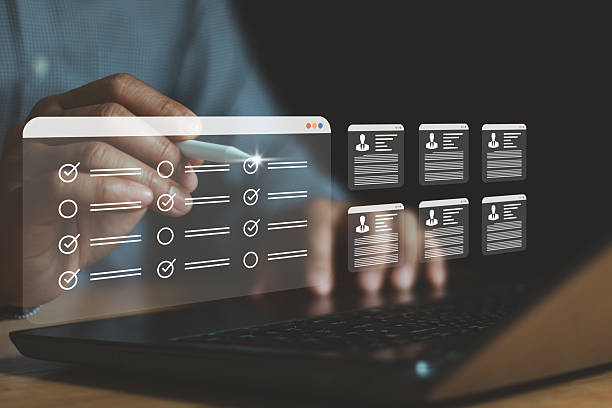What is On-Page SEO and Why is it Important?

On-Page SEO, also known as internal SEO, is a set of actions you perform within your website to improve your site’s ranking in search engine results.
These actions include optimizing content, site structure, title tags, and meta descriptions.
The importance of On-Page SEO lies in the fact that it helps search engines better understand your site’s content and display it to users who are looking for relevant information.
By optimizing your On-Page SEO, you can increase your site’s organic traffic and improve conversion rates.
#On-Page SEO is only one part of website optimization #Off-page SEO is another important activity in SEO.
In other words, On-Page SEO helps you have more control over your site’s ranking.
By using appropriate keywords, engaging and user-friendly content, and a logical site structure, you can persuade search engines that your site deserves a higher ranking.
SEO optimization is an ongoing process and requires continuous review and updates to keep pace with changes in search engine algorithms.
By properly implementing On-Page SEO, you can significantly increase your site’s online visibility and attract more audiences.
On-Page SEO not only helps search engines but also helps visitors have a better experience on your site and easily navigate it.
This can greatly assist in website SEO and achieving a good ranking on Google.
Research shows that 80% of customers trust companies with a professional website more. Does your current website inspire this trust?
With Rasaweb’s corporate website design services, solve the problem of customer distrust and a weak online image forever!
✅ Create a professional image and increase customer trust
✅ Attract more sales leads and grow your business
⚡ Get free consultation
Keyword Research: The First Step in On-Page SEO
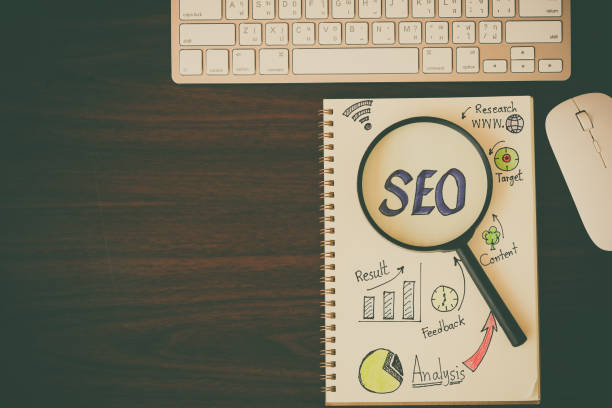
Keyword research is the process of finding and selecting words and phrases that users enter into search engines to find information related to your business.
This process is the first and most crucial step in On-Page SEO, as it helps you create content based on the needs and interests of your target audience.
To perform keyword research, you can use various tools such as Google Keyword Planner, Ahrefs, and SEMrush.
These tools provide you with information about search volume, competition, and related keywords.
When choosing keywords, look for words that have a good search volume but are not highly competitive.
Also, pay attention to the relevance of keywords to your site’s content.
Selected keywords should be naturally integrated into your content, and avoid excessive use, as this can lead to penalties from search engines.
On-Page SEO with a proper strategy can help you in this regard.
Keep in mind that keyword research is an continuous process and requires continuous review and updates.
As audience needs and interests change, popular keywords also change.
Therefore, you should regularly review your keywords and change them if necessary to always stay aligned with audience needs.
You can always get help from #competitor_analysis as well.
Optimizing Titles and Meta Descriptions
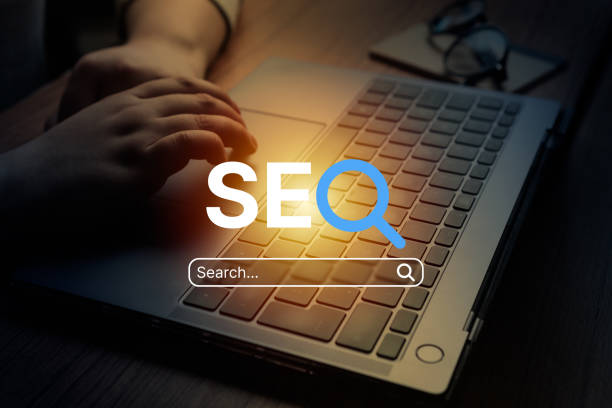
Title Tags and Meta Descriptions are important elements in On-Page SEO that help search engines and users understand your page’s content.
Titles are the text displayed in the browser tab and in search results.
Meta descriptions are a summary of the page’s content displayed below the title in search results.
Optimizing titles and meta descriptions can help improve your site’s ranking in search results and increase click-through rate (CTR).
When optimizing titles, try to use your main keywords at the beginning of the title.
The title should be attractive, concise, and accurately describe the page’s content.
The length of the title should not exceed 60 characters, otherwise, it will be truncated in search results.
When optimizing meta descriptions, try to provide an engaging and accurate description of the page’s content that encourages users to click.
The length of meta descriptions should not exceed 160 characters.
On-Page SEO helps you maintain a good position for yourself.
Using relevant keywords and creating an engaging and persuasive tone can significantly increase your click-through rate.
This CTR improvement not only brings more traffic to your site but also shows search engines that your page is engaging and relevant to users, which can also help improve your ranking.
Remember that the title and meta description are your page’s storefront in search results, so you should design them as best as possible.
| Feature | Description |
|---|---|
| Title Length | Maximum 60 characters |
| Meta Description Length | Maximum 160 characters |
| Keywords | Use at the beginning of the title and naturally in the description |
| Attractiveness | Title and description should be attractive and persuasive |
Content Optimization: Key to Success in On-Page SEO
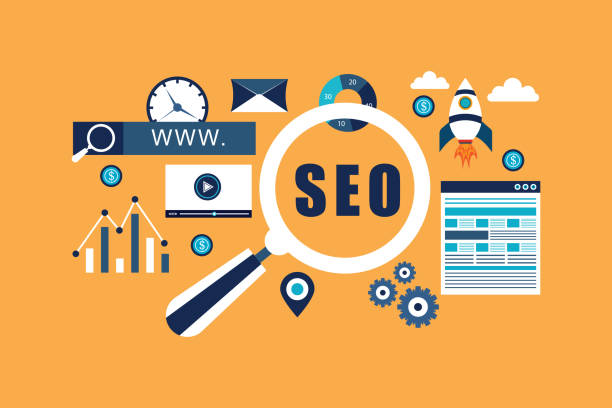
Content is king in SEO.
Producing high-quality, valuable, and audience-relevant content is one of the most important factors for success in On-Page SEO.
Your content should answer user questions, solve their problems, and provide useful information.
When producing content, pay attention to the use of appropriate keywords, proper structure, and high readability.
Quality content not only helps improve your site’s ranking in search results but also increases user engagement with your site.
Users spend more time on your site, view more pages, and are more likely to convert into customers.
To produce quality content, you can use various types of content such as articles, blog posts, videos, infographics, and podcasts.
On-Page SEO helps you achieve a better ranking on Google.
Also, pay attention to continuously updating your content.
Old and outdated content loses its value and can harm your site’s ranking.
By updating your content, you can ensure that you always provide new and relevant information to users and persuade search engines that your site is active and dynamic.
Does your current website inspire the trust that potential customers should have in your business? If the answer is no, it’s time to have your professional and impactful corporate website with Rasaweb.
✅ Fully custom design tailored to your brand identity
✅ Increase lead generation and your business’s credibility in the eyes of customers⚡ Contact us for a free consultation!
URL Structure: Creating Friendly Links for Search Engines

URL structure, or page address, is an important factor in On-Page SEO that helps search engines understand your page’s content.
Your URLs should be short, descriptive, and include relevant keywords.
Avoid using long, complex URLs containing unclear numbers and letters.
Also, avoid using uppercase letters and spaces in URLs, and use hyphens (-) instead of spaces.
A proper URL structure can help improve your site’s readability for search engines and users.
Descriptive URLs help users know which page they are being directed to before clicking on the link.
Also, a logical URL structure can help improve your site’s organization and ease of user navigation.
On-Page SEO can improve your site’s structure.
For example, instead of using a URL like `example.com/page?id=123`, use a URL like `example.com/blog/seo-internal`.
This URL is short, descriptive, and includes relevant keywords.
Also, remember to keep your site’s URLs consistent and avoid changing them, as this can lead to a loss of your site’s ranking in search results.
On-Page SEO creates a competitive advantage for you.
Image Optimization: Increasing Site Speed and Improving User Experience
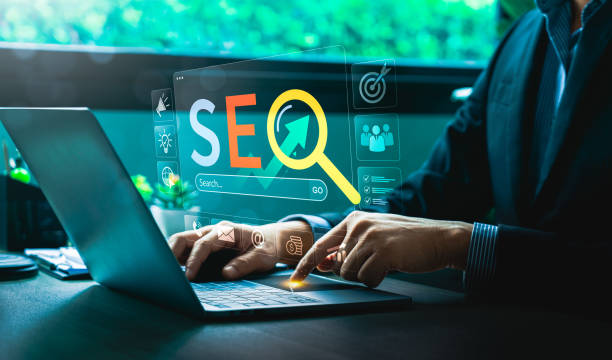
Images play an important role in the attractiveness of your site and user interaction.
However, large and unoptimized images can slow down your site and affect user experience.
Image optimization includes reducing file size, using the appropriate format, and adding alternative text (Alt Text).
By optimizing images, you can increase your site’s speed, improve user experience, and boost your site’s ranking in search results.
When optimizing images, try to reduce the file size as much as possible without significantly reducing image quality.
You can use online image compression tools for this.
Also, use the appropriate format for images.
JPEG format is suitable for images with many details, and PNG format is suitable for images with limited colors and transparency.
Finally, be sure to add alternative text (Alt Text) for all your images.
Alt text helps search engines understand the image content and is displayed to users if the image fails to load.
On-Page SEO helps you have a better user experience.
Additionally, using descriptive file names for images can also help SEO.
Instead of using file names like `IMG1234.jpg`, use file names like `seo-internal-optimization.jpg`.
These file names help search engines learn more about the image content.
Internal Linking: Creating a Strong Network of Links
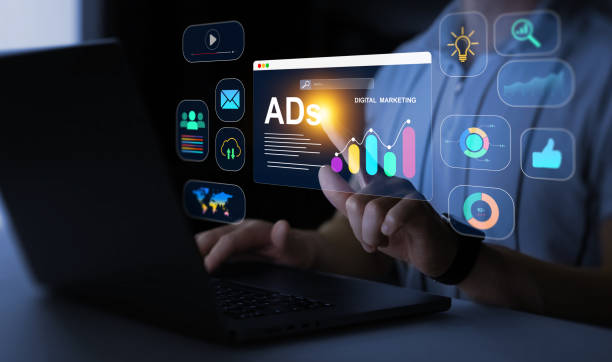
Internal linking is the process of creating links between different pages of your website.
This helps search engines better understand your site’s structure and helps users easily navigate your site.
Internal linking can help improve your site’s ranking in search results, increase user engagement with your site, and reduce bounce rate.
Internal linking in On-Page SEO is of very high importance.
When creating internal links, try to use relevant and meaningful links.
Links should lead to pages that have related content to the source page.
Also, use appropriate anchor text.
The anchor text should be descriptive and include relevant keywords.
Avoid using generic anchor texts like “click here”.
On-Page SEO helps you link related pages together.
For example, if you are discussing On-Page SEO in an article, you can link to a page about keyword research.
This link helps users gain more information about keyword research and shows search engines that these two pages are related.
Also, remember that internal linking should be done naturally and logically, and avoid excessive use of links.
| Link Type | Description | Purpose |
|---|---|---|
| Text Links | Links embedded in the text | Connection between pages, providing supplementary information |
| Image Links | Links attached to images | Navigation, referring to image sources |
| Navigation Links | Links in menus and site navigation sections | Easy access to main pages |
Improving Site Speed: A Key Factor in Ranking and User Experience
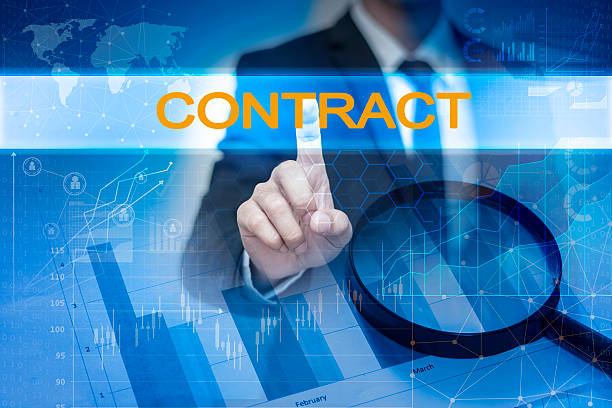
Site speed is an important factor in search engine ranking and user experience.
Users expect your site pages to load within a few seconds, otherwise, they may leave your site.
Slow site speed can lead to increased bounce rate, decreased user engagement, and loss of traffic and customers.
Improving site speed requires various optimizations, including image optimization, caching, reducing CSS and JavaScript file sizes, and using a CDN (Content Delivery Network).
To check your site’s speed, you can use various tools such as Google PageSpeed Insights and GTmetrix.
These tools provide you with information about factors that slow down your site and suggest solutions to improve site speed.
By performing these optimizations, you can significantly increase your site’s speed and improve user experience.
On-Page SEO optimizes your site.
Also, choosing suitable hosting can greatly impact your site’s speed.
Use high-quality and fast hosting to ensure your site is quickly and reliably available to users.
Appropriate hosting is one of the main pillars of any website and can have a significant impact on SEO.
Are you bothered by losing customers due to your e-commerce site’s outdated appearance or slow speed? Rasaweb’s expert team solves these problems by designing a professional e-commerce website!
✅ Increase customer trust and your brand’s credibility
✅ Stunning speed and excellent user experience
Get a free consultation with Rasaweb now ⚡
Mobile Optimization: The Necessity of SEO in Today’s World
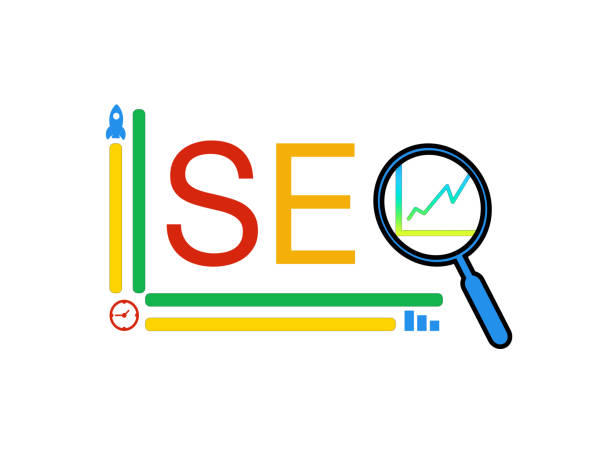
With the increasing use of mobile phones, optimizing your site for mobile (Mobile-Friendly) has become a necessity.
Google gives a better ranking to sites that are optimized for mobile, and users who use mobile phones expect your site to be displayed correctly on their device.
Mobile optimization includes using responsive design, high loading speed, and proper readability.
By optimizing your site for mobile, you can attract more traffic and customers and improve your site’s ranking in search results.
#Mobile SEO is important because most users use mobile phones.
Responsive design means that your site automatically adjusts to the screen size of the user’s device.
High loading speed means that your site’s pages should load within a few seconds on mobile phones.
Proper readability means that your site’s text and images should be easily viewable on mobile phones.
On-Page SEO helps you be optimized for mobile too.
To check if your site is mobile-friendly, you can use the Google Mobile-Friendly Test tool.
This tool provides you with information about the problems existing on your site and suggests solutions to fix them.
By fixing these problems, you can ensure that your site is mobile-friendly and users can easily use it. On-Page SEO is one of the best ways to optimize a site for mobile.
Schema Markup: Helping Search Engines Better Understand Content

Schema Markup is a code that helps search engines better understand your site’s content.
By using Schema Markup, you can provide information about the type of content, author, publication date, and other relevant information to search engines.
This can help improve your site’s ranking in search results, increase click-through rate, and attract more traffic.
There are different types of Schema Markup, each suitable for a specific type of content.
For example, Schema Markup exists for articles, recipes, events, products, and user reviews.
For using Schema Markup, you can use various tools such as Google Structured Data Markup Helper.
This tool helps you easily create and add Schema Markup code to your site.
On-Page SEO helps you organize your site.
By using Schema Markup, you can provide accurate and useful information about the content of your site to search engines and help them better understand your site.
This can help improve your site’s visibility in search results and attract more traffic.
On-Page SEO is a powerful tool to improve website ranking on Google.
On-Page SEO helps you improve your site’s structure.
On-Page SEO is essential for every website.
Frequently Asked Questions
| No. | Question | Answer |
|---|---|---|
| 1 | What is On-Page SEO? | On-Page SEO refers to a set of actions performed within a website to optimize its pages to achieve a better ranking in search results. |
| 2 | What is the most important factor in On-Page SEO? | High-quality, relevant, and comprehensive content that meets user needs, is the most important factor in On-Page SEO. |
| 3 | What role does the Title Tag play in On-Page SEO? | The title tag is one of the most important factors that tells search engines and users what the page content is about. It should include the main keyword and be attractive. |
| 4 | How important is the Meta Description Tag? | Although it does not directly affect rankings, it is very effective on the click-through rate (CTR) in search results and encourages users to visit the page. |
| 5 | How is image optimization performed in On-Page SEO? | By using appropriate alt tags, compressing image size to increase loading speed, and meaningful image file naming. |
| 6 | What is the importance of using headings (H1, H2, H3) in On-Page SEO? | Headings help structure content, increase readability, and assist search engines in understanding the hierarchy and subtopics of the content. |
| 7 | What is internal linking (Internal Linking) and what are its benefits? | Internal linking means creating links between different pages of a website. This helps distribute authority, improve user navigation, and assist search engine crawling. |
| 8 | Where should the main keyword (Focus Keyword) be placed on the page? | The main keyword should be placed in the title tag, meta description, H1, first paragraph, and naturally throughout the text, and if possible, in the URL. |
| 9 | What effect does copied or duplicate content have on On-Page SEO? | Duplicate content can harm site ranking and confuse search engines about which version is original, and may be considered spam. |
| 10 | How important is page loading speed in On-Page SEO? | Page loading speed is an important ranking factor and directly impacts user experience. Slow pages lead to increased user bounce rates. |
and other services of Rasawb Advertising Agency in the field of advertising
- Smart Custom Software: A blend of creativity and technology for digital branding through user experience customization.
- Smart Customer Journey Map: A dedicated service for sales growth based on precise audience targeting.
- Smart Advertorial: A fast and efficient solution to increase website traffic with a focus on custom programming.
- Smart UI/UX: A fast and efficient solution for user interaction with a focus on attractive user interface design.
- Smart Conversion Rate Optimization: A new service to increase website traffic through optimizing key pages.
And over hundreds of other services in the field of internet advertising, advertising consultation, and organizational solutions
Internet Advertising | Advertising Strategy | Advertorial
Resources
Complete Guide to On-Page SEO
What is On-Page SEO?
On-Page SEO and Its Comprehensive Guide
Comprehensive On-Page SEO Training
? Are you ready to revolutionize your business in the digital world? Rasaweb Digital Marketing Agency, with expertise in professional website design, SEO, and content marketing, offers a comprehensive solution for your growth and visibility. Discover the true potential of your brand with us.
📍 Tehran, Mirdamad Street, next to Bank Markazi, Kazeroon Jonoubi Alley, Ramin Alley, No. 6

